From about 5pm a thick sweet smelling smoke wafts between the Yamanote line tracks at Shinbashi station. Juicy pieces of Yakitori drip onto the fiery binchotan in bars below the tracks. The yakitori is mixed with a tare (pronounced ta-re) made mainly of shoyu and mirin to create delicious aromas beckoning all the passers by.
The local salarymen know that the best yakitori bars use the king of charcoal – binchotan – otherwise known as white charcoal. Yakitori bars often display a small bowl of bincho charcoal at the shopfront. The smoke from the grills wafts through their shopfronts at nose level right onto the street.
Binchotan V Lump Charcoal V Briquettes
To understand binchotan, one must first compare it with the standard lump charcoal and factory briquettes that grace the local hardware store.
Lump charcoal
Lump charcoal is generally made in a closed container by burning wood at about 500°C with little oxygen before it’s extinguished and cooled. It has a carbon content of 70-80%, and burns away quickly. Like binchotan it needs to be ignited in a chimney starter before use. A bag of lump charcoal comes in pieces of a totally random distribution of sizes. This size inconsistency causes high heat in some areas of the barbeque and low heat in others. Lump charcoal burns at a high temperature at first and then quickly loses its heat after peaking.
Briquettes
Briquettes or hot beads are manufactured in even sizes to overcome the size inconsistency in lump charcoal, but briquettes are loaded with impurities, fillers, have a much lower carbon content and have added chemicals to enable faster lighting and steadier burning. Add to that synthetic firestarters and you will have plumes of volatile chemical pollutants at the start of your barbeque session. Lump charcoal burns hotter and produces less ash than briquettes, however it’s used up quickly, is prone to sparking and unexpected loud popping sounds.
Binchotan
Prized by chefs around the world, binchotan is a very pure high carbon charcoal made from oak. Unlike lump charcoal and briquettes, because of high carbon content it is completely odourless – enabling you to enjoy the natural flavours of the food. To recognise binchotan charcoal, tap two sticks of it together and you should hear a light metallic sound.
Binchotan is produced by firing in a sealed kiln at a low temperature for a long period – up to 4 days. Oxygen in the kiln is reduced in order for the carbonisation to take place. It is then refined at very high temperature – over 950°C – for a short period. After firing it is removed from the kiln and smothered with sand, ash and soil giving it’s distinctive white appearance. The result is a highly dense charcoal with a carbon content of approx 93-95%. The binchotan from the Kishu region is said to have the best binchotan with a carbon content of 96%.
Why binchotan?
The benefits of using binchotan for grilling go beyond the obvious. Binchotan burns cleanly with a high steady heat and the alkalised ashes are said to neutralise protein acids and other undesirable acidic products during cooking. Due to far-infrared radiation produced by the charcoal, foods are quickly sealed enhancing the natural flavours of the food. Binchotan is a highly dense charcoal and burns for a very long time, with each piece being able to burn for 3 – 5 hours depending on the thickness. Binchotan can be more difficult to ignite than lump charcoal and briquettes but this is a minor inconvenience compared to the flavour it imparts.
Chefs tips
- Place binchotan in a charcoal chimney starter or directly on a portable gas burner and place directly over a gas flame for about 20-25 minutes or until glowing hot. Never use synthetic fire starters which completely defeats the purpose of using binchotan.
- When you put the binchotan in your hibachi / konro, leave it to burn for about 10 minutes and then reshuffle the logs to get a more even heat
- When you finish cooking, dunk the charcoal in water with some solid tongs and then place on a tray to dry, or smother in an old pot with the lid on so you can use the charcoal again (and again)
- Remember the binchotan is far hotter than ordinary charcoal so be very careful.
……..
Try some binchotan for your next barbeque.

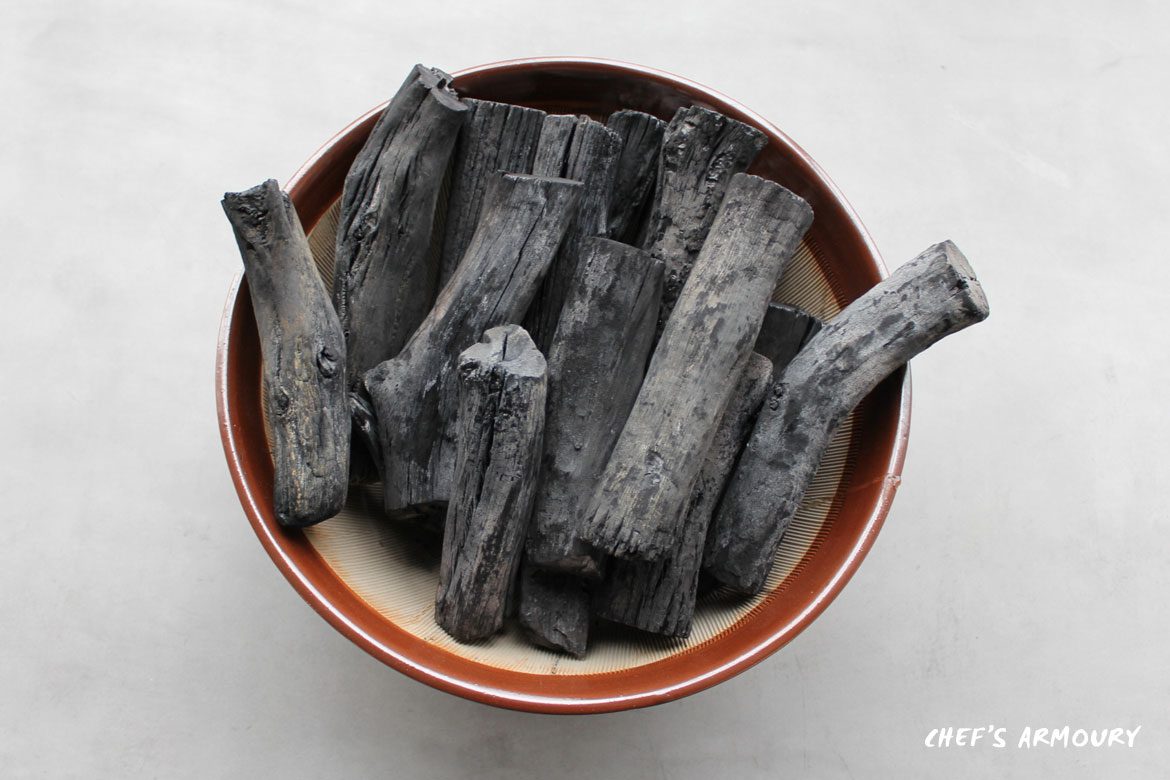
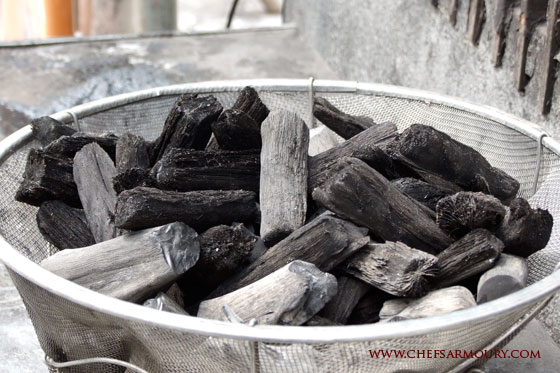
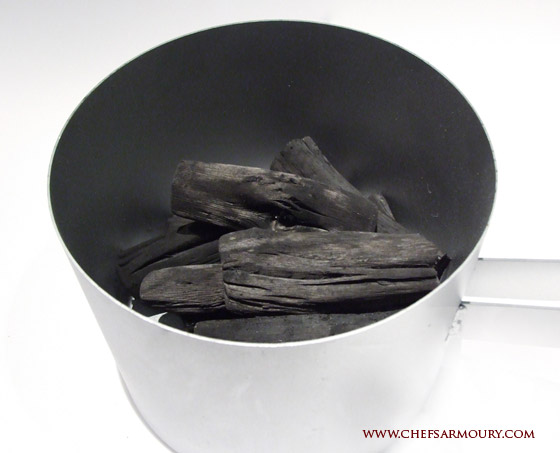
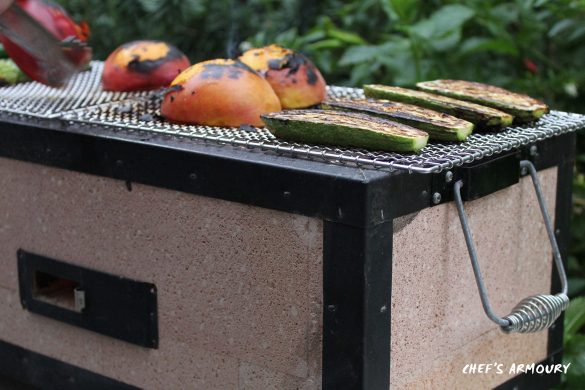
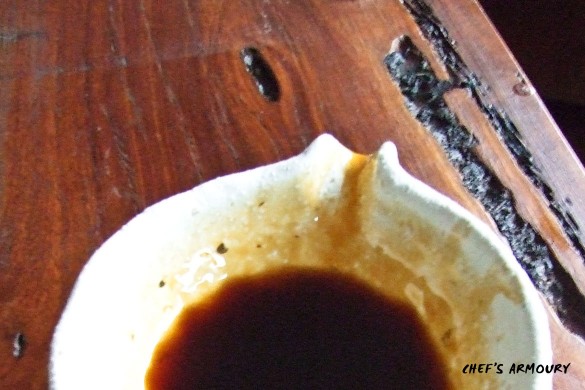
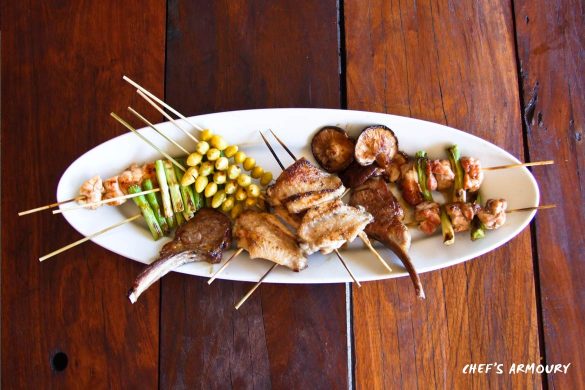
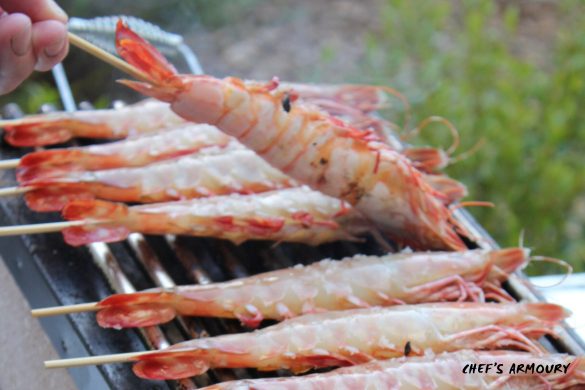
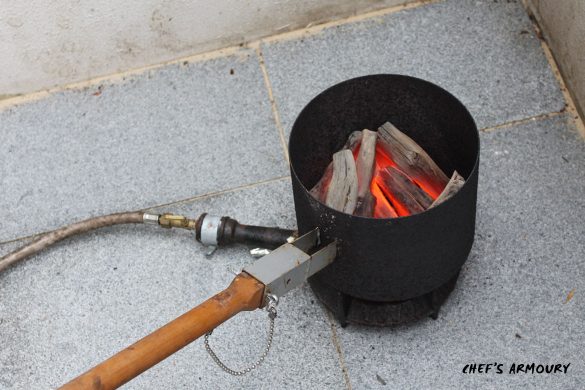
11 Comments
Yum! Going to Japan this year, must visit those Yakitori places…any particular recommendations?
Our fave yakitori is TonTon near Yurakucho station. A perfect combo between atmosphere, taste and excellent service.
Hi, just wondering if you know any bars or restaurants in Sydney or other states grilled Yakitori with Binchotan? I like Suminoya Japanese BBQ restaurant but I think they use briquettes as they are looks manufactured shape. Thanks.
Not sure of any local venues using bincho. Suminoya most likely use compressed sumi as the name suggests.
Hi there
Please advise what these are made of please? Also, where can you purchase this charcoal. Thanks, Lois short
HI Lois,
The charcoal can be purchased at this link http://www.chefsarmoury.com/bbq-39-s-grills-and-accessories/cat_78.html
Can you use binchotan in a weber kettle BBQ?
yes, any barbeque, the konro is recommended because it uses less charcoal due to the natural insulation of the konro
[…] to cook the food, to bring out the proper flavor and ensure it’s cooked correctly. This is called white oak “bincho”, or Japanese White Charcoal. Robata charcoal has several unique properties – it burns almost […]
[…] a pure high carbon charcoal made from oak, is great for cooking your food on the hibachi grill. According to Chefs Armoury, unlike lump charcoal and briquettes, binchotan is completely odourless and keeps the natural […]
[…] Japanese-French fusion menu, the heart of which is a sequence of brochettes grilled in excess of binchotan charcoal. This a single features coarsely ground duck — which tastes incredibly substantially like duck, […]